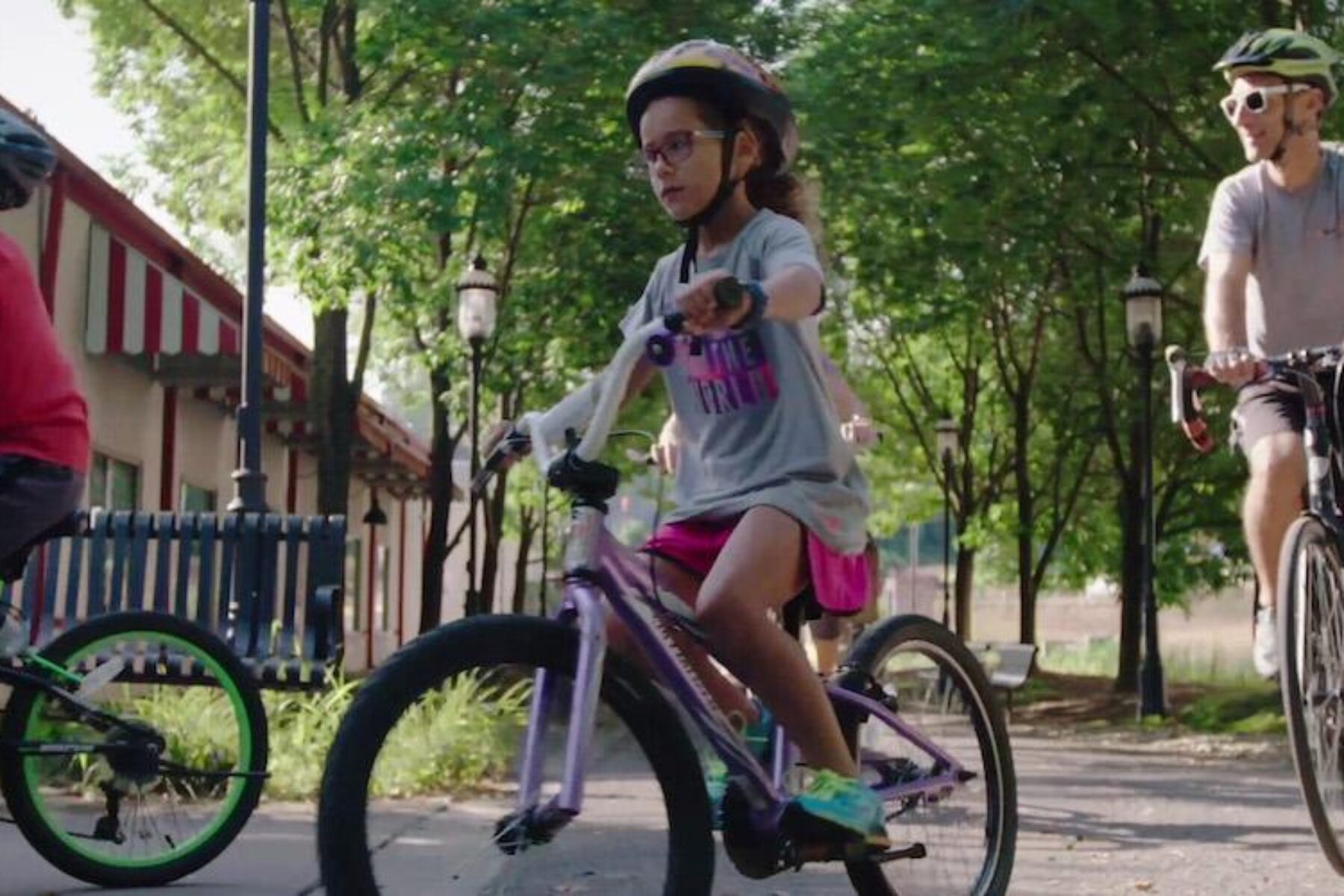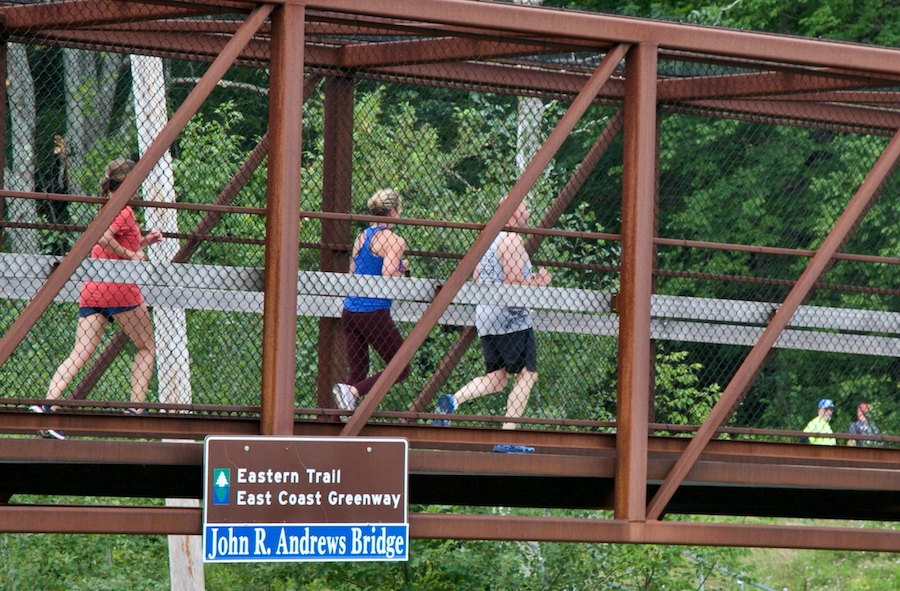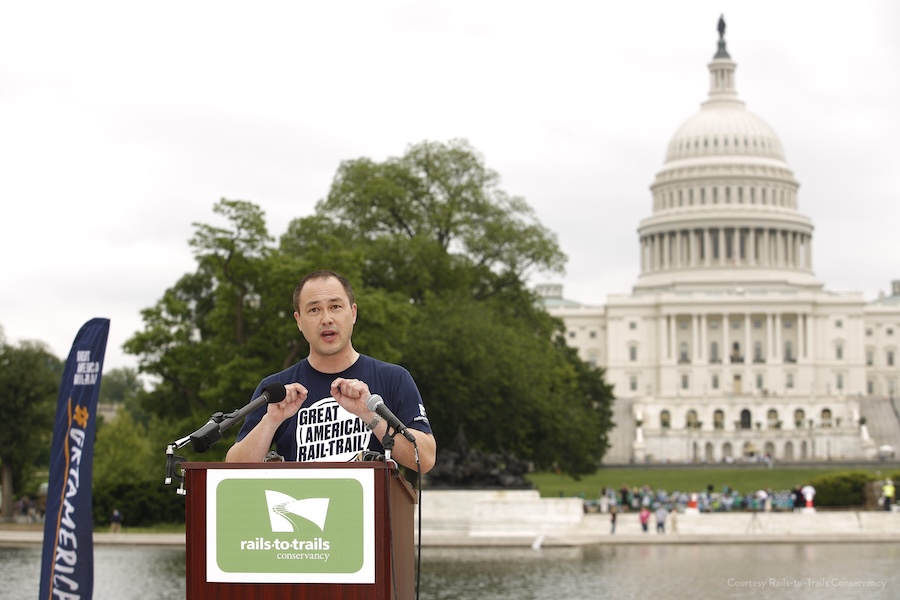Active Transportation Infrastructure Investment Program Factsheet

Across the country, communities are planning and building connected active-transportation networks—making it safer and more convenient for people to get where they need to go on foot, by bicycle and by wheelchair. Local governments know that this investment is critical to reduce transportation-related fatalities, strengthen their economies, provide more transportation options to underserved communities and reduce greenhouse gas emissions—but the funding and resources available to implement these plans are limited.
To unlock the benefits of active transportation for the nation while addressing goals around safety, equity and the environment, Congress authorized the Active Transportation Infrastructure Investment Program (ATIIP) as part of the Infrastructure Investment and Jobs Act, also known as the Bipartisan Infrastructure Bill (BIL), 117 H.R.3684.

This innovative new grant program provides:
Investment that is uniquely contracted to enable communities to plan and construct connected active-transportation systems
Funding for active transportation networks that connect people to everyday destinations like public transportation, businesses, workplaces, schools and other community activity centers, as well as active transportation/trail spines that link communities and regions
Prioritization of funding for active transportation systems planned with community input or aimed at addressing disparities in bicyclist and pedestrian fatality rates, with opportunities for a higher federal share in disadvantaged communities
A rule to be issued that will encourage the use of categorical exclusions, expedited procurement techniques and other best practices to ensure that infrastructure is constructed quickly and efficiently with as little impact as possible
To date, $45 million has been invested in ATIIP. It is critical that the program be funded at the fully authorized level of $200 million in FY 2025. That is what is needed to put this program to work and begin to meet growing state and local demand for safer and more accessible routes for people to walk and bike where they live, and to connect across regions. This funding is necessary to safely meet the mobility needs of millions of Americans in rural, suburban and urban communities who cannot drive or choose not to for at least some of their trips.
Investment in Connected and Safe Active-Transportation Systems Is Effective
Just like roads and rails, infrastructure for walking and bicycling works best when it is safe and connected. Nearly 50% of all trips people take are within a 20-minute bicycle ride. More than 20% of all trips are within a 20-minute walk. When communities build trails and other facilities that safely connect people to their destinations, it becomes more convenient for people to get where they need to go on bike or by foot without having to walk or bike on a dangerous road—improving health and the environment, while reducing congestion and building the economy.
The safest infrastructure for all ages and abilities is separated from car traffic, such as trails, sidewalks and protected bike lanes. Regional active-transportation connectivity fills the gaps in existing walking and biking infrastructure to ensure that people can safely travel between residences and destinations such as jobs, schools, transit facilities and commercial centers. Active transportation spines connect between communities and states, essentially serving as the interstate highways of nonmotorized mobility. Together, regional networks and spines will form a nationwide active-transportation system to serve the growing demand for safe places to walk and bike across urban, suburban and rural America.
Congress has already shown that investing in regional active-transportation systems works. The Nonmotorized Transportation Pilot Program provided focused investment in four different communities (Marin County, California; Minneapolis, Minnesota; Sheboygan County, Wisconsin; and Columbia, Missouri) of $28 million each to construct networks of nonmotorized transportation facilities. The pilot program led to an estimated 85.1 million miles of driving averted to walking or bicycling between 2007 and 2010, while fatal bicycle and pedestrian crashes held steady or decreased in all four communities.
Take the right next step:
Fund ATIIP at its authorized level of $200 Million in FY25.


Donate
Everyone deserves access to safe ways to walk, bike, and be active outdoors.